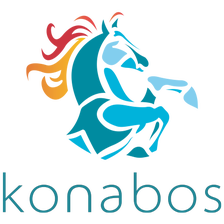The 3 Most Important Speeds Your Website Needs to Focus On
Mike Edwards - Technical Director
7 Jan 2022
Every CTO, CMO, marketer, developer, and salesperson must focus on three speeds to enhance their web presence. It includes page speed, content speed, and feature speed. This post will look at each of these factors and why they remain critical to your business's success.
The speed at which the world does business is accelerating, and the internet has only exacerbated this trend. New web businesses are being launched every week that provide new ways to share your content, services, and products with your audience or manage your back-office activities.
In addition, the way that consumers want to consume content is also changing, with a shift to imagery and video being key. It means a company needs to stay agile and respond quickly to market changes.
Page Speed
You might have heard the term page speed when people talk about Google because it is crucial in how the leading search engine ranks your website.
Above-average page speeds positively impact your SEO score, giving you a higher ranking on Google. The search engine is used by 81% of internet users and accounts for 92% of search traffic. So, it's critical to keep the search god happy.
But it isn't all about Google, as page speed is essential for just getting visitors to simply view your page. Pingdom has some great stats on bounce rates showing that the difference between three and five seconds of page load time can lower website traffic by more than 27%. Imagine having a shop where a quarter of your customers didn't enter because it took them too long to get through the front door. Ideally, we should maintain our page loading speed to less than two seconds.
The third benefit of a fast page is that it's mobile-friendly. Most of us working in tech have amazing mobile devices, data plans, and connections. So when we test our websites on our mobiles, we are testing in the best conditions and have no problems, but our customers rarely have these conditions.
They might be in areas with lower connection speeds or equipped with limited data plans. Think of the times when you have visited the toilet and brought out your phone to do a bit of browsing (admit it, we all do this) only to see that you are now on 3G because the toilets seem always to be surrounded by 6 foot thick walls. Faster pages tend to be lighter weight, giving a far better experience on mobile.
This is one of many reasons why page speed is essential and probably worth its own blog post.
Content Speed
What do I mean by "content speed"?
For me, content speed means "how quickly can the business post new content to their website?" i.e., how many hours does it take to plan, write, create artwork, review and place the same into a content management system, in addition to creating social media posts and finally sharing with your audience. Don't just think blog posts but also product, corporate and service information.
Creating content is probably one of the most demanding challenges for any business because it isn't a process with a finish line. Instead, it is a continuous process with multiple pit stops, and the last thing your marketing and sales teams want are tools that don't support them.
Tools that make it difficult to upload images, scale them correctly, or force you to spend hours fighting with a rich text editor to get your content correctly formatted all act as a barrier to your teams. At best, these problems slow things down; at worse, they actively put your teams off because the thought of fighting the "system" is too much. It is where tool choice becomes critical.
So, when you meet your IT team, it makes sense to take them through the process of creating and publishing content. A blog post should be readily available, after which the IT team should show you have easy it is to insert images, format text, and publish that content.
Getting content onto your site easily is critical to allow your business to respond quickly to news reports, social media trends, customer questions, and new product or service releases. If your company can't respond fast enough, you can be sure your competitors will. Content also aids SEO and keeps your customers interested in your company and what it offers.
Feature Speed
Feature speed is probably the elephant in the corner of the room that many of us on the technical side don't like to talk about too much. So how quickly can we add a new feature to your website? By feature, I mean something functional that allows the user or business to do something on the site that they couldn't do before. For example, it can be as simple as adding a newsletter signup page or share buttons to your blog posts, or as complex as a complete e-commerce system.
Why is this important? The quicker you can add features to your website/application/platform, the faster you can respond to your customers' needs and your competition. It is an added benefit that typically, the more quickly you can deploy changes; the lower is the cost of development.
Those from a non-technical background may think, "Surely there isn't much difference. But I can tell you that there is a world of difference after working with a large variety of different systems.
Things that affect the feature speed can be the increase in complexity of the application or the quality of documentation from the vendor, the time to set up development environments, or how quickly a developer can iterate when making changes.
These characteristics are often not easy to identify before buying a piece of software and throwing your weight behind it. The best way to minimize this problem is to ensure you have a good set of assessment criteria when selecting a product. Ask the software vendor to provide you with access or a license to create a simple proof of concept to see how easily development and deployment are. You can also reach out to independent development agencies to give you an impartial view of the product.
Getting there fast
We have only scratched the surface of how speed is vital to your online presence, but I hope I have shown why thinking about speed should be on top of your list. It needs to be considered before a website or application starts getting built. The speed of your platform and web presence will define how well your company can respond to events happening in the world and how well you can serve your customers.
Start considering speed before you even begin to look for your next software product. You need to sit with different department teams and talk to them about how they currently manage data, what slows down their process and what improvements could help them. Next, please speak with the software vendor and ask them for independent performance stats and how they review and improve their admin UI to make things faster. Finally, work with a development team that understands and focuses on performance as a critical success criterion.
What is preventing your team from moving fast? What would you like to change? Let us know on social media.

Mike Edwards
With 18 years of IT development experience, Mike has worked across government, not for profit, and commercial sectors. He has delivered large-scale multinational websites, desktop and mobile applications, and mission-critical health apps. He works closely with the client and delivery teams to ensure that projects deliver business benefits and not just a technical solution.
Mike is a nine-time Sitecore MVP and is the founder of the very popular Glass.Mapper.Sc ORM, which has over 1 million downloads.
Outside of work, Mike can be found exploring the British countryside, riding his motorbike, and learning the piano.



Share on social media